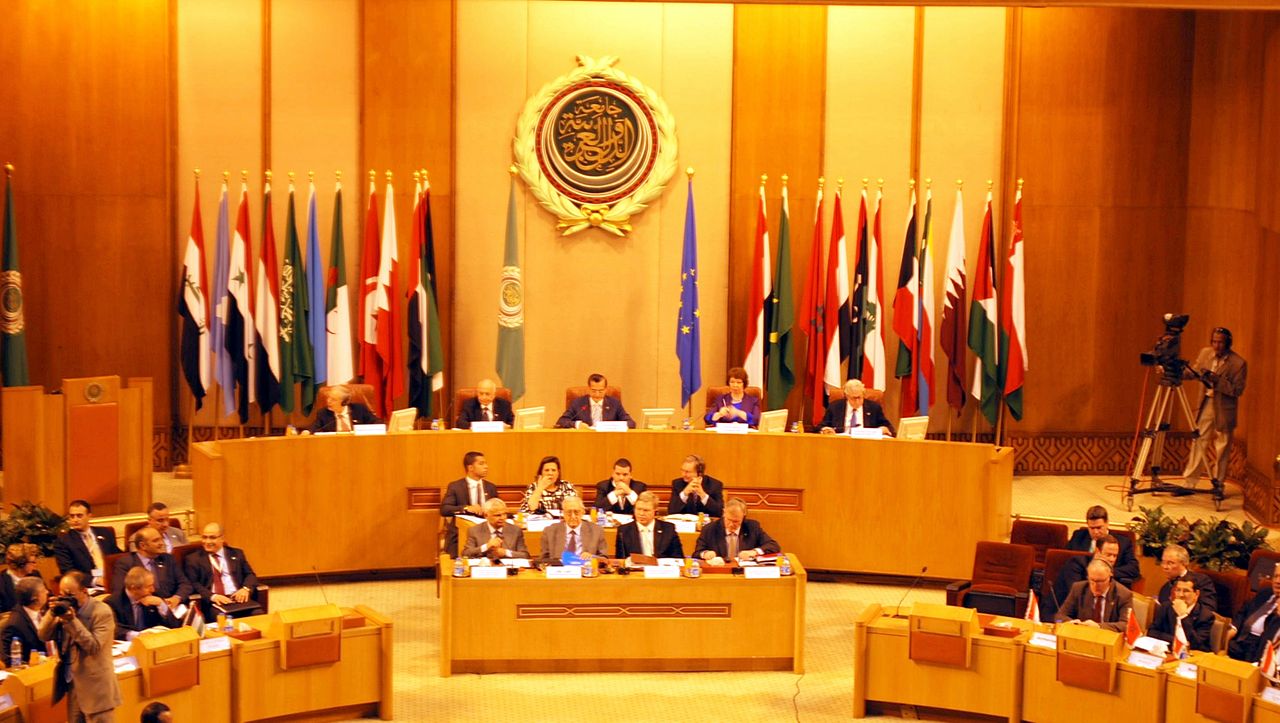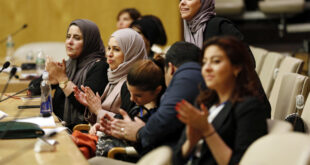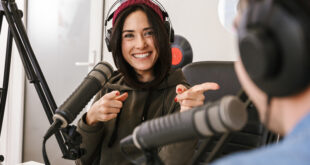Any attempt to write an account of popular culture in the Middle East must face the question of how to define Arab and the Arabs? This might seem an odd statement at first glance: some 350 million people speak the language, ergo they are Arabs, and Arab, the Arabs, the Arab world are terms used so ubiquitously today that the issue is rarely raised. But the need for qualification becomes clear when considering political institutions, regional diversity, historical and cultural patrimony, and the multiple discourses on identity of the region. The political institution par excellence that houses the Arabs is the Arab League, an organization formed in 1944 when its founding countries were still subject to British and French colonial tutelage. Its 22 members include a country in which hardly any Arabic is spoken (Somalia) and countries in which a significant section of the population speak another language as their mother tongue and resist identification through the term Arab (Berbers in Morocco and Algeria; Kurds in Iraq and Syria). Others have lost the language of a previous identity and remain divided over ‘Arab’ (Egyptian Copts). Others do not attempt to define themselves as Arab yet control territory in which around half the population is Arabic-speaking and embrace the Arab identity marker (Israel and the occupied territories). What we are dealing with then is a contingent identity, a complex political and cultural formulation, deployed politically and embraced culturally at various stages of the past and present.
Arabness, Arab nationalism, and pan-Arabism are terms that connect two specific historical periods. The first is that of the Arab-Muslim conquests of the seventh century ce (known as the futūhāt, or ‘openings’), when Arab tribes from the Arabian Peninsula, under the leadership of Hijazis, established an empire stretching across the Middle East and North Africa into Spain (and briefly France) and Central Asia. The Arab polity was ruled over the following centuries from imperial capitals and garrison towns by an Arab governing core, which at first kept its system of belief and practice to itself, and applying taxes to the non-Muslim majority outside ruling elite. But with the incorporation of conquered populations into the bureaucracy, the spread of Arabic, and the gradual entry of the populations into the ruling group’s religion, Arabness recedes as a defining characteristic of the state-building enterprise the Arabs initiated.[1] The ideological framing of the civilizational bloc was Islamic, yet its urban centers from today’s Morocco to Iraq (and for seven centuries much of the Iberian Peninsula) were sites for the diffusion of not only Islam but linguistic Arabization. Samir Amin (1978), Ernest Gellner (1981), and Patricia Crone (1989) have argued for specific characteristics of political economy in this urban civilization, in which the governing merchant-scholar-bureaucratic elite were beneficiaries of wealth created through tributary relations and international commerce rather than the agricultural surpluses of European feudalism and its extensive landed aristocracy. [2]
***
This problematization of the Arabs expresses itself in Western media. Middle East news coverage has established themes that serve to put a question mark over the normality and even sanity of the culture.
***
The second key period in question was the nineteenth century when a historical sense of Arabness (urūba), usually described by theorists of the modern era as long dormant, was revived and reconfigured in response to the challenge of Europe, which propagated the notion of nation-states for specific ethnic groups as one of the bases of modernity, and to the European conceptualization of the Arabs as a nation manqué. A similar intellectual evolution took place in the Ottoman imperial capital Istanbul, which ruled directly over territories of today’s Syria, Iraq, Palestine, the Arabian Peninsula, and Libya, with nominal authority in Egypt and Tunisia, where Europeans for long referred to generalized ‘Turks’ and ‘Turkey’ but in a manner which differed from how Ottomans themselves used the term. Theorists of Arabism also benefitted from the pioneering work of Jamal al-Din al-Afghani and Muhammad
Abduh in the 1880s and ’90s in transforming the Orientalists’ Islam into an ideological tool of political action through the novelty of mass media. With Arab nationalism, Islamic civilization was to be reframed as Arab civilization, Arabic language and literature and pride in Arabness were reactivated within this new paradigm, and the new community was imagined as the ‘Arab world.’ The taxonomies were Orientalist, the nomenclature imperial,[3] and some parts of Arab world were to come to Arabness later than others. Both local nationalisms and Islamist ideologies presented challenges to Arabism in the decolonization period of the twentieth century.
Counter-narratives and manipulations
Despite this, expressions of pan-Arab identity at both a political and cultural level are often met with derision in Western thinking about the Middle East region. After imagining the Arabs in the nineteenth century, the leading Western powers for a host of political and economic reasons had no interest in a strong Arab bloc, unless it was to rubber stamp pro-Western policies in weak institutions like the Arab League. National borders, which in many cases are a product of British and French colonial diktat, define states that offer spheres of influence for political and economic opportunity. These approaches, lodged in the discourse of Orientalism crafted in the nineteenth century, persist in Western narratives spanning media, politics, even academia, to this day. For this reason, the vibrant pan-Arabism seen in the Arab world’s popular culture passes largely unnoticed in English-language discussion.
This problematization of the Arabs expresses itself in Western media. Middle East news coverage has established themes that serve to put a question mark over the normality and even sanity of the culture. The Arabs are presented as somehow different from other peoples—in the freedom of their women (despite the same issues appearing in India or the extent of domestic violence in the United States), restrictions on alcohol (a corporate question that ignores for the prohibition tradition in many US states), anti-modern clerics (while all manner of religious obscurantism can be found in America). Another media shibboleth is that Arabs represent the essence of an unchanging Islam, despite the fact that most of the world’s Muslims reside in South and Southeast Asia, and that the Arabs have inscribed into Islam in a unique propensity for violence. These themes will often contradict one another, such that one will come across the opinion in written or spoken public discourse that the Arabs are hopelessly disunited, ergo an ineffective failed nation (namely Peter O’Toole’s lecture over squabbling tribes in Lawrence of Arabia), but at other times the Arabs United are written as a threat to Israel and driven by an Islamic fanaticism.
***
The music and cinema that was the cultural accompaniment of the Nasserist era, rather than fading with the collapse of the dream of unity and failure of 1967, has been reinvigorated through the development of satellite media since the 1990s.
***
Arab media often trades in these themes and manipulations. In the context of Iran’s conflict with Gulf states, Gulf-owned pan-Arab media deploys the term Arab to imply that the entire region and its public opinion are ranged with Saudi Arabia and other Gulf states in policies of sectarian mobilization. Saudi media has retired the Israeli-Palestinian conflict as the prime pressing minds in the Arab sphere in favor of an expansionist nuclear Iran. There was never any evidence that an Iran with nuclear weapons was a major concern among ‘the Arabs’ beyond the Gulf where state capacity to finesse public opinion is more effective than it is to do the same in Egypt or Morocco. This consensus peddled in Arab media was not in truth representative of the Arabian Peninsula, where Oman facilitated secret talks that ended the nuclear standoff with the United States and energetically pursued commercial ties with Iran once UN sanctions were lifted in January 2016. Saudi religious scholars and propagandists often deploy sectarian insults against religiously diverse Omani culture in both new and traditional media as a warning of the kind of violent decomposition that could befall Omani society if government policy does not fall in line with Saudi imperatives. In the context of the sharp rivalry between Saudi Arabia and Iran since the collapse of Baath rule in Iraq, Arab writers in Gulf-controlled media will often suggest that Arab Shi'a are not really Arab at all.
Essentialist manipulations of the discourse of the Arabs have been shown at their starkest in the discussion of the Islamic State (ISIS) phenomenon. Western media took ISIS as emblematic of an ontological problem of (Arab) Islam itself (see The Atlantic article in which even academics were wheeled out to argue ISIS was quintessentially “Islamic”).[4] Writers in the Saudi orbit did their best to deflect connections between ISIS ideology and Saudi Wahhabism, which had become an object of media consumption following the 9/11 attacks in 2001. ISIS was described, variously, as an Iranian plot, the consequence of Muslim Brotherhood radicalization since Sayyid Qutb, or, in the vein of Thomas Friedman or Farid Zakaria’s commentaries in the shadow of 9/11, a sign of generalized Arab civilizational dysfunction. Thus the efficacy of the term ‘Salafism,’ an invented tradition of alleged antiquity claiming to represent normative Sunni Islam, which serves to provide radical Sunni ideology with an acceptable face in the ideological marketplace. Salafism, especially in its elaboration as ‘jihadi,’ has spawned an industry among think tankers and security studies expertistas who consider this rationalizing puritan trend of the twentieth century as almost entirely the product of intellectual transformations internal to the Islamic tradition, ignoring the interplay between imperialism and conservative forces in the region (who, for example, provided foot soldiers for wars framed as jihad in Afghanistan, Iraq, and Syria).
New Arab culture
And yet popular culture has been critical in the constitution and perpetuation of pan-Arab identity. Unlike the political projects of Arab nationalism, popular culture, in its music, cinema, and television, has been extremely successful in promoting Arabism. The music and cinema that was the cultural accompaniment of the Nasserist era, rather than fading with the collapse of the dream of unity and failure of 1967, has been reinvigorated through the development of satellite media since the 1990s, through which popular culture not only keeps the Palestinian cause alive—a historical link to the earlier nationalist period—but produces new nodes of transnational identity. Hundreds of news, religion, and entertainment channels serve as mouthpieces for businessmen, religious sects, political movements, and governments, but beyond the control mechanisms and attempts to formulate opinion a shared space has been created for a ‘new Arab public.’[5] The Arab uprisings benefited from a third media revolution: that of platforms such as Twitter, YouTube, and Facebook. These tools of communication proved invaluable in mobilising protesters and creating bodies of public opinion in Bahrain, Egypt, Syria, Yemen, and previously in Iran in 2009, and governments use them to fight back: Bahrain engaged in a sophisticated campaign of propaganda, witch-hunt, and intimidation using both traditional and new media.
***
Popular culture can help us to answer the question of how to define Arab and the Arabs, to understand a contingent identity whose political deployment and cultural embrace has changed over time.
***
Through popular culture Arabism has traveled across the boundaries national culture seeks to delineate and slipped beyond the control of policymakers and media planners. Arab popular culture encompasses the Egyptian singer Umm Kulthum, Algerian-Lebanese singer Warda, Algerian director Lakhdar Hamina’s Waqā Sanawat al-Jamr (Chronicle of the Years of Embers), the only Arabic work to win the Palme D’or at Cannes, the Arabic version of The Voice, Gulf poetry show Shair al-Milyun (The Poet of Millions), Ahmed Adawiya capturing the zeitgeist with his classic song of slums and urban grime Zahma, Nour Sherif as the polygamous husband Metwalli in the Egyptian soap of the same name, Moroccan singer Saad Lamjarred who became a popstar through the show Super Star, or pop star Latifa Arfaoui, from the first generation of Arab pop stars, who once said on Lebanese television she would switch from Egyptian to her native Tunisian Arabic since Lebanon and Tunisia were Phoenician-origin outposts of liberalism in the Arab world. Most pop singers will sing in their own dialect plus Egyptian, partly because they reach a wider public in this way, but also because of the continuing prestige of the Egyptian language despite the progressive degradations of Egyptian cultural and political life since the 1960s. This multilayering of identities allows those in the public eye to shift between different audiences.
In other words, popular culture can help us to answer the question of how to define Arab and the Arabs, to understand a contingent identity whose political deployment and cultural embrace has changed over time. The modern construction of the Arab is unquestionably problematic. But the post-colonial states have been systematic in implementing Arabization policies. Arabic dialects are being standardized within individual Arab countries based on the prestigious dialects of their capital cities, and these national dialects are in turn being affected by other dialects and formal Arabic through the unifying power of mass media and communications. Cairene Arabic first played this role during the Arab nationalist period and continues to do so via Egyptian television’s huge reach but since the 2000s Levantine and Gulf dialects have competed much more aggressively with Egyptian in the Arab public sphere. Even dialects in the Maghreb, which have always been receivers of linguistic culture from the Mashreq, are now better understood in the Arab East. Both formal and colloquial Arabic are interacting in popular culture and politics in the Arab world today in the perhaps final stage of the Arabization begun thirteen centuries ago.
Abridged from upcoming Popular Culture in North Africa and the Middle East (ABC-CLIO, 2017).
 Arab Media & Society The Arab Media Hub
Arab Media & Society The Arab Media Hub





